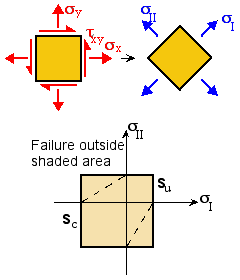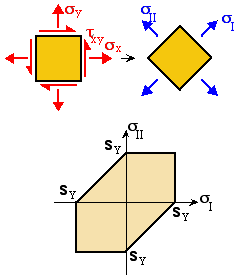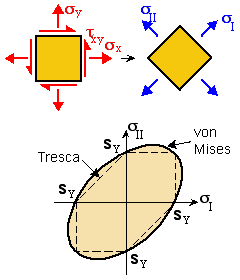The Maximum Normal Stress criterion states that when the maximum normal stress in any direction of a brittle material reaches the strength of the material - the material fails. Thus, finding the Principal Stresses at critical locations is important.
Failure occurs when:
sI > Su or sII > Su |
(tension) |
|sI| > |Sc| or |sII| > |Sc| |
(compression) |
- Su is the ultimate strength in tension
- Sc is the ultimate strength in compression
- Sc > Su for brittle materials; a typical ratio is Sc ~ 10Su





